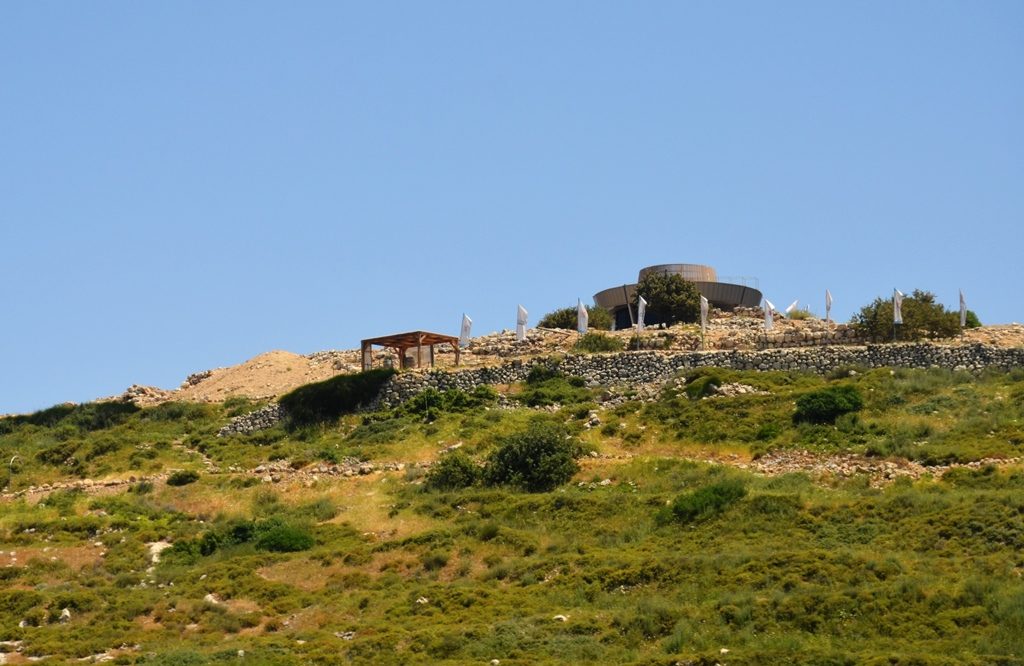The view winding up the mountains overlooking the Kinneret, Sea of Galilee, is always impressive.
Much more on trip to Syrian border and Israeli medical aid to Syrians next week, but for now
Shabbat Shalom.

שבת שלום
Jerusalem, Israel – what is really happening

“Next year in Jerusalem”
has been for centuries,
the mantra of the Jewish people.
At the conclusion of the Passover seder
and at end of weddings by breaking a glass,
the destruction of Jerusalem was remembered.
From May 1948 to June 1967,
the years under Jordanian occupation,

reaching the Kotel, Western Wall or
walking near the Temple Mount,
was only for the imagination or in a dream.
A view from a look out at Notre Dame,
over a dangerous No Man’s Land,
was as close as a Jew could get.
For those under the age of 60,
the drama and trauma of the Six-Day War,
and the resulting victory are taken for granted.
The rush of feelings, of a miraculous deliverance
against giant Arab armies attacking on all sides is lost.
The significance of
Jerusalem 50 and its many celebrations are shrugged off,

for today tens of thousands can reach the Kotel Plaza to pray.
However, the Six-Day War,
also saw the return to Gush Etzion,

a distance 16 kilometers south of the Knesset.
And in the north,

the beautiful Kineret, Sea of Galilee,

had Syrians in those Golan Heights towering above.
Hadassah Hospital on Mount Scopus
was closed after a convoy of medical staff was ambushed
and 73 people were murdered in April 1948.

This memorial wall in the Mt. Scopus memorial garden
was backdrop for a reenactment of Hadassah getting its keys back
from Mayor Teddy Kollek, in June of 1967.
And the West Bank,
which was for centuries known as Judea and Samaria,

the land of Benjamin,

stretches as far as the eye can see,

and includes Tel Shilo,
which for 369 years was location of the Holy Ark,
before the time of King David and the Temple in Jerusalem.
50 years.
Half a century.
This is a wondrous time to be in Jerusalem, Israel.
The days of choking polluted air
from vehicles stuck in heavy traffic on Yaffa Road,

are vanishing memories, as the light rail trains run by.
50 years,
things are far from perfect,
but I would not want to go back to 51 years ago.
It does not happen often,
but we got away from Jerusalem, Israel,
for a few days and we drove up north.
Nothing is far in Israel,
and in two hours you can be at the Kinneret,
the Sea of Galilee.
It looks so cool and calm,
but on the other side,
Syria is on the other side of the Golan Heights.
It used to be on the other side of the lake.
The Galil seems filled with prosperous
Arab villages along the main roads.
Check out this sign in Arabic
for the Israeli (Chinese) dairy company Tnuva.
A special ceremony honoring fallen Bedouin soldiers and security officers
was held this week at the official memorial park
established in honor of Bedouin IDF soldiers, police and scouts.
It is beautifully landscaped with large symbolic stones.
In this photo, three stones represent those hung as spies by Syria.
Despite the community pride in the fallen security forces,
no names were permitted to be photographed and published.
All those names are listed this in memorial wall shaped like a tent,
but I was told not to share the names.
Not far away,
rising above the valley is Mount Tabor,
with its narrow winding road leading up to the top.
Buses have to park at the bottom,
as only smaller vehicles can make the multiple crazy turns.
It is truly is a wonder how the Terra Santa friars
built the original structure so many centuries ago.
But what a view from there now!
Jerusalem is not the only place of contrast,
old and new, for much of Israel today is amazing,
and constantly changing.
Ok, it was fun to see one of those
old fashioned baby transporters,
new and in use in the restaurant parking lot.
Established under difficult conditions,
in 1901, Kfar Tavor,
has a museum with old milk cans,
while a few kilometers away, huge tank trucks come and go
from the state of art Tnuva factory.
The highways are not like the old days,
Highway 6 with its large trucks reminded us
of the New Jersey Turnpike traffic.
While driving it was possible to check
the phone for email and updates and more,
but the Kfar Tavor Museum has the one phone,
for all of the Palestina (Eretz Yisrael) area in 1926.
Wine is still processed the old fashioned way
in wooden, hand-crafted barrels.
Looks like this is as close as I am getting to
the Jerusalem Wine Festival this year.
Last night I attended a special event,
in the Kfar Shmaryhu residence
of the US counselor for Press and Culture.
3 teams of Ethiopian Israelis presented
entrepreneurial projects done with mentors
in a new Tech-Career incubator program.
In 2002,
no Ethiopian Israelis were trained in hi-tech in Israel,
now there are hundreds.
A few highlights of week, old and new and change,
the sunsets were picture-perfect every night,
but it is good to be back home in Jerusalem.